| Topic: DRAGONS UNICORNS MERMAIDS PEGASUS OTHER MYTHIC ANIMALS | |
|---|---|
|
Edited by
tazzops
on
Sat 07/16/11 09:23 AM
|
|

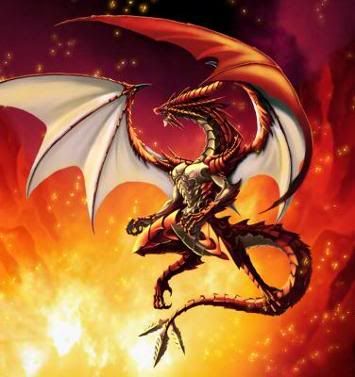

|
|
|
|
|
|
Edited by
tazzops
on
Sat 07/16/11 09:28 AM
|
|
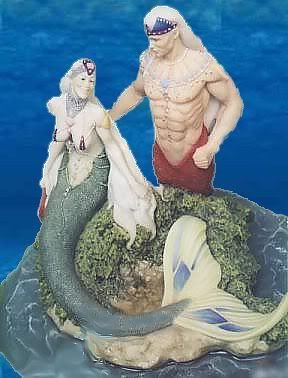
|
|
|
|
|
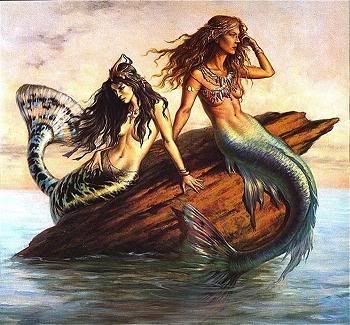
|
|
|
|
|
|
Edited by
tazzops
on
Sat 07/16/11 09:32 AM
|
|


|
|
|
|
|
|
Edited by
tazzops
on
Sat 07/16/11 09:54 AM
|
|


|
|
|
|
|
|
The Great Glenn is an enormous gash in the earth that splits the Scottish Highlands in two. It forms a chain of rivers, canals and lakes, (or lochs), that connect the North Sea with the Atlantic Ocean. One of these lakes, Loch Ness, is the home of perhaps the most famous cryptozoological riddles of our time. Loch Ness, the largest freshwater lake in the British Isles, is twenty four miles long and, at one point, one and a half miles wide. It has an average depth of four hundred and fifty feet and at times plunges close to a thousand. It is cold and murky, with dangerous currents. In short, it is the perfect place to hide a monster from even the most prying eyes of science. Many bodies of water in Northern Scotland have ancient legends about monsters that were never written down. A tale that supposedly occured in 565 A.D. tells of Saint Columba who saved a swimmer from a hungry monster in the Ness river. This story was recorded in the book The Life of Saint Columba sometime in the late 7th Century and is often connected with later sightings in the in the nearby lake. Modern Sightings In 1933 after a new road was built along the edge of the Loch, the number of reports soared. The first of these came on April 14 when the owners of an inn in Drumnadrochit, the Mackays, observed an "enormous animal "rolling and plunging" in the Loch. They reported itto Alex Campbel, the man in charge of regulating salmon fishing in the Loch. Campbel spent a lot of time at the lake and observed the monster himself several times after being told of the Mackay sighting. Loch Ness is a long, narrow, deep lake cutting through the Scottish Highlands. Campbel described the creature as having "a long, tapering neck, about 6 feet long, and a smallish head with a serpentine look about it, and a huge hump behind..." Campbel estimated the length of the "monster" to be about thirty feet. The first photograph of the thing was taken in 1933 by Hugh Gray. Gray reported, "I immediately got my camera ready and snapped the object which was then two to three feet above the surface of the water. I did not see any head, for what I took to be the front parts were under the water, but there was considerable movement from what seemed to be the tail." Probably the most famous picture of the Loch Ness monster was the "surgeon's photo" supposedly taken by Colonel Robert Wilson in 1934. It shows a long, thin neck rising above the water connected to a hump-like body. This photo is thought to be a fake, though, after the confession of Christian Spurling who helped build the model monster that was photographed. He admitted the hoax shortly before he died in 1993 at age 90. |
|
|
|
|
|
Edited by
tazzops
on
Sat 07/16/11 10:25 AM
|
|
|
THE JERSEY DEVIL
The most accepted origin of the story as far as New Jerseyians are concerned started with Mother Leeds and is as follows: It was said that Mother Leeds had 12 children and after giving birth to her 12th child she stated that if she had another it would be the Devil. In 1735, Mother Leeds was in labor on a stormy night. Gathered around her were her friends. Mother Leeds was supposedly a witch and the child's father was the Devil himself. The child was born normal, but then changed form. It changed from a normal baby to a creature with hooves, a horse's head, bat wings and a forked tail. It growled and screamed, then killed the midwife before flying up the chimney. It circled the villages and headed toward the pines. In 1740, a clergy exorcised the demon for 100 years and it wasn't seen again until 1890. Reportedly in 1778, Commodore Stephen Decatur visited the Hanover Iron Works in the Barrens to test cannonballs at a firing range, where he allegedly witnessed a strange, pale white creature winging overhead. Using cannon fire, Decatur purportedly punctured the wing membrane of the creature, which continued flying – apparently unfazed – to the amazement of onlookers. The Jersey Devil is considered a nuetral creature. 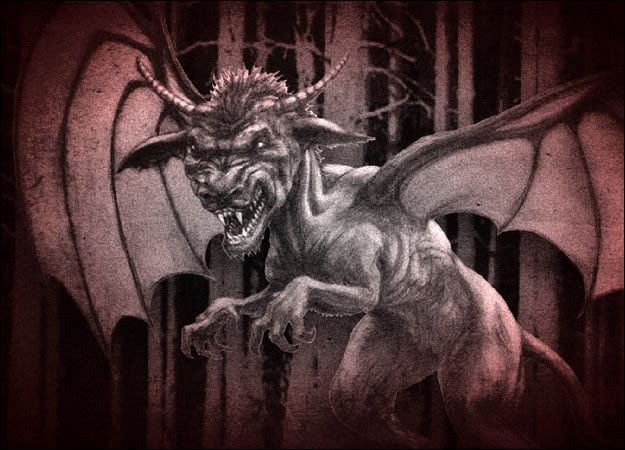

|
|
|
|
|
|
Now the Jersey Devil I never heard of, what a unique creature, and that picture up there of Bigfoot I heard was a hoax, now I am not sure if Bigfoot is real or not, but people say they reside deep in the woods of the Northwest, the reason why I love unicorns and fairies, Pegasus, is because they are such beautiful majestic creatures, they are fantasy creatures, so when I look at these pictures it takes me to another world, I also like gargoyles and vampires, now in the evening times I look up all sortsa of fantasy creatures on the pc, I have pictures that people have drawn for me of these awesome creatures, next is the research on the mermaids.

|
|
|
|
|
|
A mermaid (from the Middle English mere in the obsolete sense 'sea' + maid(en) is a legendary aquatic creature with the head and torso of human female and the tail of a fish. The male version of a mermaid is called a merman; the gender-neutral collective noun is merfolk. Various cultures throughout the world have similar figures. In some ancient cultures Mermaids were regarded as semi-divine aspects of the Goddess, connected to the sea from which life arises and honoured in seaside temples. The earliest Mermaid story comes from Assyria around 1000 BCE. Atargatis, an Assyrian priestess, jumpred into the sea to wash away the shame of an unwanted pregnancy and emerged as a fishtailed goddess. In the 2nd century BCE, the Greek historian Lucian reported that the statue of the Great Goddess at the temple of Hieropolis (which is now modern Turkey) had a fishtail instead of legs. In Greece, Aphrodite, the goddess of love, as born from the sea foam and rode to land on a half-scallop shell. In the 1st century CE, Pliny wrote convincingly of the existence of Mermaids, but said that their bodies were 'rough and scaled all over'. But by the 5th century CE, the bestiary Physiologus described Mermaids in terms that accord fully with their contemporary image. Mermaids are 'wonderfully shaped as a maid from the navel up and fish from the navel down'. Mermaids were often sighted by seamen during the middle ages, Christopher Columbus among them, who reported seeing three Mermaids on his first voyage to the Americas in 1493. Mermaids figured prominetly in sailors' lore, because of such travellers' tales. The most common story was that Mermaids were incredibly skilled at seducing lonely sailors and dragging them down to their underwater kingdom. It was also believed that they could cause storms and shipwrecks. These beliefs were reinforced by the medieval Church, to which Mermaids were an emblem of vanity, lust and the spiritual perils of women and of sexuality. The Sirens of Greek mythology are sometimes portrayed in later folklore as mermaids; in fact in some languages the name sirena is used interchangeably for both creatures. Other related types of mythical or legendary creature are water fairies (e.g. various water nymphs) and selkies. |
|
|
|
|
|
Edited by
tazzops
on
Sat 07/16/11 10:49 AM
|
|
|
GNOMES Gnomes are very widespread species, known to a number of human races. Germans name them Erdmanleins, except in the Alpine areas, where they are called Heinzemannchens. In Denmark and Norway they are Nisse; Nissen is a Swedish variation. In Brittany they are called Nains. Tontti to the Finns and Foddenskkmaend is their name in Iceland. The Polish call they by the familar Gnom. Bulgaria and Albania, however, use Dudje. In Hungary, Yugoslavia, and Czechoslovakia, Gnomes are called Mano. The Dutch use Kabouter and the Belgian, Skritek. Switzerland and Luxembourg use the same name, Kleinmanneken, which means "littlemen." Domovoi Djedoes is used in western Russia. Race :Gnomes consist of a number of different types. The most common is the Forest Gnome who rarely comes into contact with man. The Garden Gnome lives in old gardens and enjoys telling melancoly tales. Dune Gnomes are slightly larger than their woodland breathren and choose remarkably drab clothing. House Gnomes have the most knowledge of man, often speaking his language. It is from this family that Gnome Kings are chosen. Farm Gnomes resemble their House brethen, but are more conservative in manner and dress. Siberian Gnomes have been more interbred than other Gnomes and associate freely with trolls. They are much larger than the other types and have an infinately more nasty nature. It is best never to evoke the ire of such Gnomes for they delight in revenge. Origin : Believed to be originating in Scandinavia, Gnomes later migrated to the lowlands some 1500 years ago. Description : Gnomes are usually an average of 15 centimeters tall (but in some stories they are said to be around a foot (30 cm) in height), but with its cap on it appears much taller. Their feet are somewhat pigeon toed which gives them an extra edge on speed and agility through the woods. 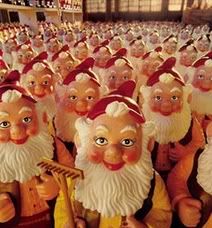
|
|
|
|
|
|
Now about the mermaid, I have always wondered how they would seduce, lonely sailors, I mean they don't have the bottom body part for seducing, unless its between there tail fin
 now if there were mermans, which I never seen pictures of that I would understand. now if there were mermans, which I never seen pictures of that I would understand.
|
|
|
|
|
|
Edited by
tazzops
on
Sat 07/16/11 11:24 AM
|
|
|
Elves are generally depicted in one of two ways. The first being small, human-shaped creatures, that employ their magical skills to manufacture many different things from delicious cookies to toys in Santa's workshop. The second is that they are powerful, human-sized beings that are more beautiful and noble than humans. They are genrally long-lived and eternally youthful. An elf is a mythical creature of Germanic Mythology/Paganism which still survives in northern European folklore. In Norse mythology they were originally a race of minor gods of nature and fertility. Elves are often pictured as youthful-seeming men and women of great beauty living in forests and other natural places, underground or in wells and springs. They have been portrayed to be long-lived or immortal and they have magical powers attributed to them. Following the success of J. R. R. Tolkien's epic workThe Lord of the Rings—wherein a wise, angelic people named Elves play a significant role—they have become staple characters of modern fantasy (see: Elves in fantasy fiction and games). Elf can be pluralized both as elves and elfs. Something associated with elves or the qualities of elves is described by the adjectives elven, elvish, elfin or elfish. A convention of modern fantasy usage is: the v in elven or elvish refers to human-sized elves (who correspond more closely to the mythology of the Viking Era), whereas the f in elfin or elfish refers to tiny-sized elfs (who correspond more closely to the folklore of the Renaissance and Romantic Eras). 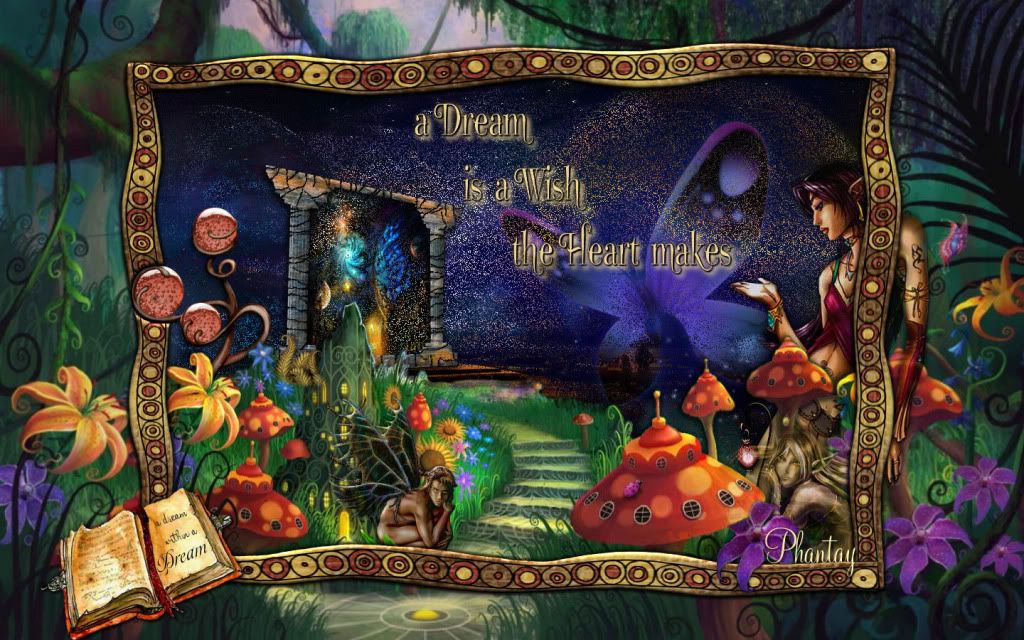
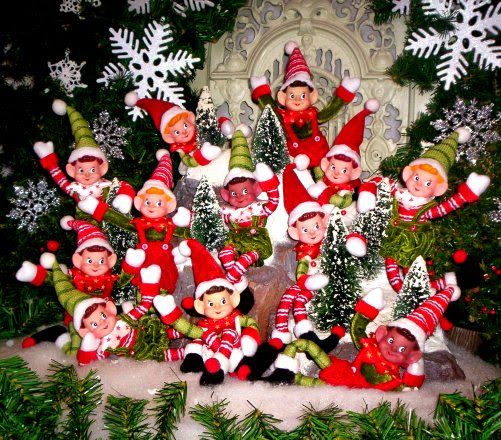
|
|
|
|
|
|
Now about the mermaid, I have always wondered how they would seduce, lonely sailors, I mean they don't have the bottom body part for seducing, unless its between there tail fin  now if there were mermans, which I never seen pictures of that I would understand. now if there were mermans, which I never seen pictures of that I would understand.
I have not yet pickup one in the local bar.    
|
|
|
|
|
|
Now the Jersey Devil I never heard of, what a unique creature, and that picture up there of Bigfoot I heard was a hoax, now I am not sure if Bigfoot is real or not, but people say they reside deep in the woods of the Northwest, the reason why I love unicorns and fairies, Pegasus, is because they are such beautiful majestic creatures, they are fantasy creatures, so when I look at these pictures it takes me to another world, I also like gargoyles and vampires, now in the evening times I look up all sortsa of fantasy creatures on the pc, I have pictures that people have drawn for me of these awesome creatures, next is the research on the mermaids. 
I miss this dear lady. I had liked dragons since I was old enough to understand dragons. |
|
|
|
|
|
What about trolls, scary little creatures
 
|
|
|
|
|
|
A mermaid (from the Middle English mere in the obsolete sense 'sea' + maid(en) is a legendary aquatic creature with the head and torso of human female and the tail of a fish. The male version of a mermaid is called a merman; the gender-neutral collective noun is merfolk. Various cultures throughout the world have similar figures. In some ancient cultures Mermaids were regarded as semi-divine aspects of the Goddess, connected to the sea from which life arises and honoured in seaside temples. The earliest Mermaid story comes from Assyria around 1000 BCE. Atargatis, an Assyrian priestess, jumpred into the sea to wash away the shame of an unwanted pregnancy and emerged as a fishtailed goddess. In the 2nd century BCE, the Greek historian Lucian reported that the statue of the Great Goddess at the temple of Hieropolis (which is now modern Turkey) had a fishtail instead of legs. In Greece, Aphrodite, the goddess of love, as born from the sea foam and rode to land on a half-scallop shell. In the 1st century CE, Pliny wrote convincingly of the existence of Mermaids, but said that their bodies were 'rough and scaled all over'. But by the 5th century CE, the bestiary Physiologus described Mermaids in terms that accord fully with their contemporary image. Mermaids are 'wonderfully shaped as a maid from the navel up and fish from the navel down'. Mermaids were often sighted by seamen during the middle ages, Christopher Columbus among them, who reported seeing three Mermaids on his first voyage to the Americas in 1493. Mermaids figured prominetly in sailors' lore, because of such travellers' tales. The most common story was that Mermaids were incredibly skilled at seducing lonely sailors and dragging them down to their underwater kingdom. It was also believed that they could cause storms and shipwrecks. These beliefs were reinforced by the medieval Church, to which Mermaids were an emblem of vanity, lust and the spiritual perils of women and of sexuality. The Sirens of Greek mythology are sometimes portrayed in later folklore as mermaids; in fact in some languages the name sirena is used interchangeably for both creatures. Other related types of mythical or legendary creature are water fairies (e.g. various water nymphs) and selkies. Mermaids Since ancient times, sailors crossing the world's oceans have reported seeing mermaids, beautiful fish-maidens with long flowing hair and incredible powers of seduction. These exquisite creatures are described as irresistibly attractive with the torso and head of a young woman and the lower body of a fish. The first mermaid stories date back at least 3,000 years, and reports were still common up until the discovery of the New World by Europeans. Such tales sometimes describe mermaids as helpful, saving sailors who had the misfortune to fall overboard. Others convey a more menacing intention on the part of the fish-ladies, such as their fondness for making ships crash onto rocky shores. Still others describe these fin-tailed beauties as murderous beasts that seduce men with beautiful songs and then kill then mercilessly for the sheer joy of it. |
|
|
|
|
|
Unicorns
Unicorns are magnificent and noble creatures that have enchanted young and old across the globe and through the ages. They are both a symbol of purity and goodness and the personification of untamed freedom. Many cultures throughout the world have their own version of the unicorn myth, but most depict them as white horses with a long horn extending from the forehead. The horn is usually spiraled, which makes light dance across the body of the animal as the sun shines down upon it. Unicorns are often associated with rainbows and fair maidens. According to legend, unicorns can only be captured by maidens alone in the forest. Unlike most mythical animals, which seem to be based on humanity's deepest fears, most unicorn tales convey an animal that is quite gentle and good. Unicorn lore dates back several thousand years, and occasional "sightings" are still being reported today. |
|
|
|
|
|
Edited by
tazzops
on
Sat 07/16/11 01:34 PM
|
|
|
Of all the winged creatures on the surface of Caelereth, none is so mystical, beautiful, or wondrous as the Bird of Flames, the legendary Phoenix. This awe inspiring bird is rarely seen, and very little is known about its origins. Some strongly believe that it is a God's pet, let loose on the world now and again, to give the people a glimpse of a Gods' powers. Others swear by the fact that the Phoenix is, itself a God, the incarnation of Foiros, bringing peace to the righteous and swift retribution to the evil and corrupt. Still others say it is not more then a near extinct animal, no different from a swan or dove. Whatever the case, the Phoenix is the rise of many tales and poems, and the few people that claim to have caught a glimpse of this extraordinary bird, seem to be blessed living long and prosperous lives, or cursed, and soon find horrific ways to die. Some pass it off a coincidence, but... Appearance. The Phoenix is breathtaking to say the least. Its large size only enhances its beauty, as it soars and dives in the sky. Its feathers are composed entirely of fire; its tail feathers orange and deep yellow, and its body mostly dark orange, red and crimson. Other then the feathers of fire, the Phoenix has other defining features. The huge talons are razor sharp and could easily skewer several men. They are quite comparable to the front legs of the Griffon, only they are in the more traditional place of birds. The talons themselves are about a half-foot long, three curved claws in front, and one larger jagged claw in the back. Another defining feature of the Bird of Flames is its head. The long and slender beak looks very traditional to most large birds, but its eyes are a much different story. They are deep set and shine of an intelligence that is undeniable, which is truly remarkable. There is no doubt that the majestic beast has hidden origins, an even more mysterious present, and a shrouded future. Special Abilities. The Phoenix, despite its undeniable beauty, has a host of extraordinary abilities that make even the strongest of skeptics take note. The first and most obvious is its ability to control the amount of heat its own fiery body gives off. It can singe your sword to your face at great distances, or allow you to pet its great feathers without so much as heat blister! As a branch of this ability, the Phoenix can also propel huge streams of fire by bringing the large wings together. Another maybe less known ability of the Bird of Flames is its shrilling call. The Phoenix can shriek to the point that anything around it is brought to tears and can't hear clearly of days, or even weeks. Lastly, the most amazing ability, is more of a myth then fact. This is because no one has ever seen a Phoenix die. The tale goes that when this wondrous bird comes to death, it turns to ash. The ash then ignites in golden fire, and the Phoenix is revived in its own sacred fire. To this end, the Phoenix is an immortal, never really dying, just reviving from its own remains. While this belief is widely held, no really evidence has been brought forward to prove the claim of immortality. Territory. The Phoenix knows no borders and calls no one-place home. It lives all over Aér'aí'chán, as reported sightings have come from Cyhalloi all the way to Aeruillin. How any thing can be seen in so many places, so few times, only adds to its mystic and splendor. Habitat/Behaviour. The sky is the only place that a Phoenix is comfortable in. It may occasionally land, to take a break, or to view the area at ground level, but it seems happiest when its great wings are spread, and it is diving and soaring in the clouds. That’s about all that is known about this creature's unique habits. The sky is were it loves to be, the heaves are it's domain. Diet. No one can say for sure what it is that a Phoenix sustains its self on, although as with every other aspect of its existence, there are many speculations. Some say that it feeds on smaller birds, and even larger ones, like the Gryph or the Griffon. Some go even so far as to say that the Phoenix eats dragons, as dragon corpses have been found striped of all flesh. Others say that it eats fire, noting the fact that the bird's self is composed of flames. Still others say that it feeds of the kind and pure thoughts of the people of Aér'aí'chán, as it brings joy into their lives. As with all other aspects of the Phoenix's existence, nonoe of these theories can be proved, nor disproved. Mating. Again only ideas can be put forward on the mating habits of the Phoenix. If you believe it to be a God, then how does a God mate? If you believe it to be a bird, then the female Phoenix would make a nest and lay eggs. If you believe the Phoenix is an immortal being then it is all alone. No matter what you hold true, one will never find out the truth. Myth/Lore. As you may have gathered, nothing about the Phoenix is known for sure, the only thing that the people have to go on are tales and myths. Though many would argue that theses poems and stories are only fiction, made for the purposes of entertaining young and old, all myths and legends are based on truth. In fact the Phoenix is such a well know and respected creature that The House of Eithar, in the old Voldarian Ruling Council took it as their house crest. The following is a poem that talks about the true origins of the Phoenix: "Too all that dream, and all that dear To see the beauty of land, sea and air Nothing shall ye ever spy As wondrous as the Phoenix in the sky Too all think, and all that ponder The ways of things on this place we wonder The one thing ye shall never know Is: To what home does the Phoenix go? Too all that pray, and believe in too Avá merciful, pure and true A brighter sign there shall never be Then the mighty Phoenix over the sea Too all that live a life of good Your deeds of love will come back; as they should A happy life shall be yours to take away When the Phoenix comes with the break of day Too all that walk the path of dark My next words ye would do well to mark For your deeds of evil ye shall be burnt in flame And your actions shall be meet with untold of pain To Human, Elf, Dwarf and all To every creature great and small The Phoenix is many things; in future now and history And though every person has their say, The Phoenix stays a mystery" |
|
|
|
|

|
|
|
|
|
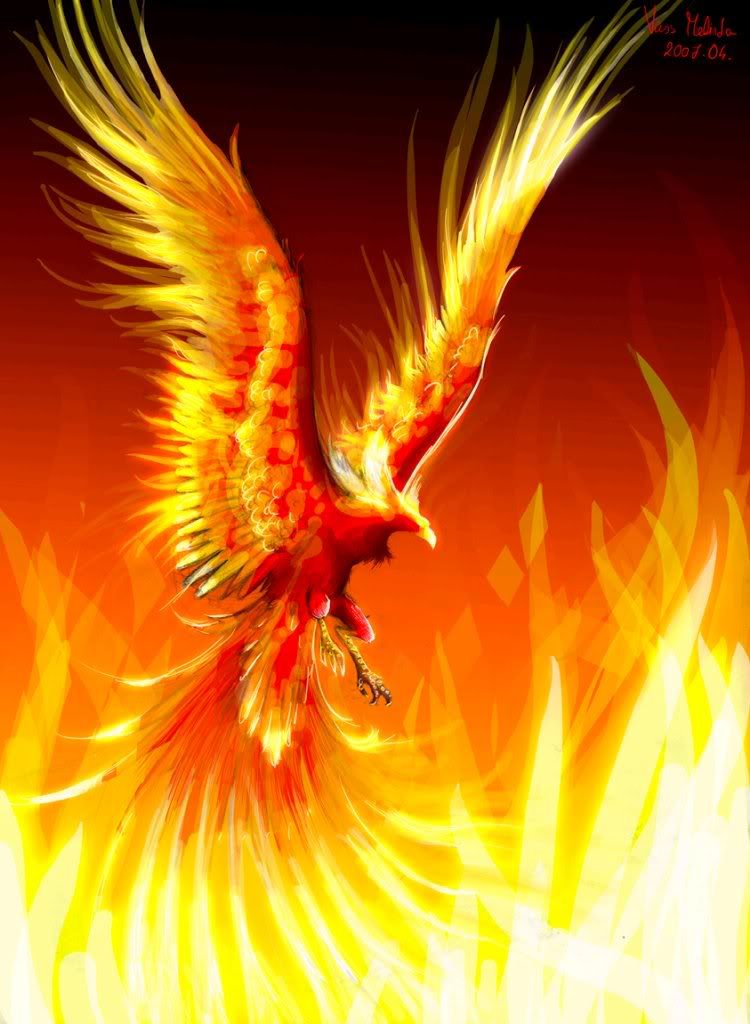
|
|
|
|
|







